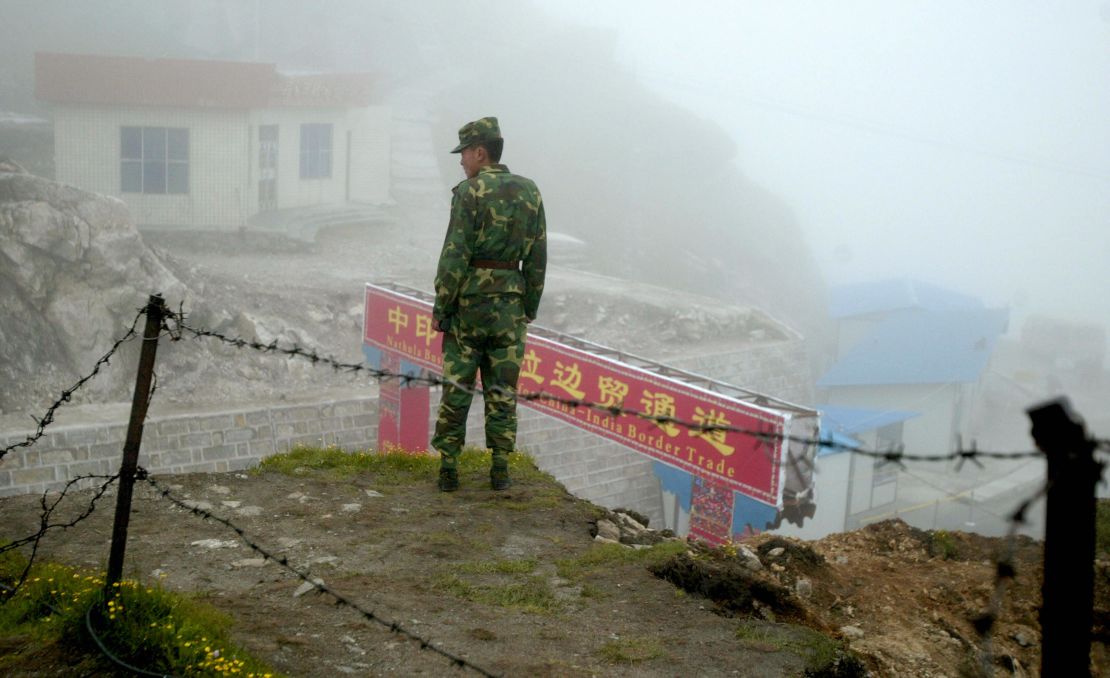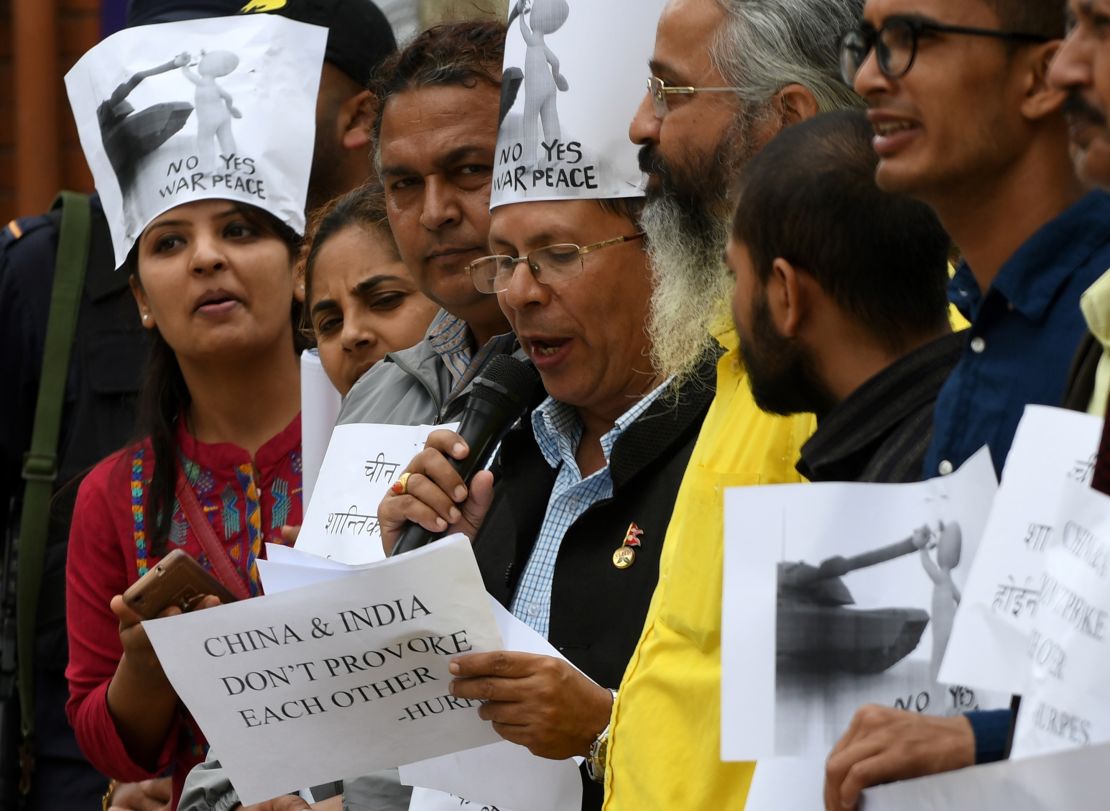Story highlights
Border tensions have been ongoing for weeks, show no sign of de-escalating
Comments come amid increasing Chinese military activity throughout Asia
China has promised to carry out more military drills near a disputed border region amid an escalating war of words with India.
“We will preserve our sovereign territory and security interests at any cost,” Senior Col. Wu Qian, Chinese Defense Ministry spokesman, told reporters Monday, adding that the People’s Liberation Army will “further intensify targeted operations and trainings” around the Doklam area.
India and China have been in a weeks-long standoff over a thin strip of land bordering both countries and Bhutan, in the Himalayas. Though not a part of Indian territory, the area is close to the “chicken’s neck,” a strategic corridor that serves as a vital artery between Delhi and its far northeastern states.
Beijing has accused India of sending troops into Bhutan, while the Bhutanese government says China has constructed a road inside its territory in “direct violation” of treaty obligations.

Territorial tussle
Last week, China conducted live-fire drills on the Qinghai-Tibet Plateau close to the site of the current standoff, something Wu vowed will continue until India withdraws from the region.
“The 90-year history of the People’s Liberation Army has proven that, when it comes to safeguarding our sovereignty and territorial integrity, our capabilities keep strengthening while our determination remains firm,” he said. “It is easier to move a mountain than to shake the PLA.”
Indian national security adviser Ajit Doval will arrive in Beijing Thursday, the fourth visit by an Indian government representative since the beginning of the dispute last month.
The current Doklam dispute has rattled many observers, harkening back to the 1962 bloody border war between India and China – the causes of which were never solved, leading to multiple territorial flare-ups in the years since.
Shashank Joshi, a senior research fellow at the Royal United Services Institute in London, said the situation is reminiscent of a similar standoff in 1986, which involved 200,000 troops on each side but ended diplomatically.
“This is still a far smaller crisis relative to that crisis, but in terms of length, there is every possibility that this situation will effectively stretch into the winter,” he said. “The noteworthy thing about the Chinese statement is not that it escalates the situation, but that it avoids any softening of the crisis. The probability of a quick resolution coming out of the meeting of the two national security advisers this week seems slim.”
“I’m not sure how this situation de-escalates, not just because of the media hype on both sides, but also because China may not have an interest in de-escalating,” Yvonne Chiu, assistant professor at the Department of Politics at Hong Kong University (HKU), told CNN last week.

Deteriorating relations
The Doklam dispute began on June 16 when China accused Indian border guards in the northeastern state of Sikkim of crossing into its territory in southwestern Tibet, in an attempt to obstruct the construction of a new mountain road. India has not denied its troops were present in the area. According to a statement released by the Indian Ministry of Foreign Affairs, Indian personnel “approached the Chinese construction party and urged them to desist from changing the status quo.”
This was followed by a formal complaint by Bhutan that China was building on its territory. India and Bhutan have maintained historically strong relations and closely coordinate their foreign policy. India’s military is also involved in training Bhutan’s armed forces.
China, which does not have formal diplomatic ties with Bhutan, has repeatedly denied that it has violated any treaties and has called India’s involvement in the issue “utterly unjustifiable.”
Relations between Delhi and Beijing have soured in recent years, amid increasing Chinese investment in India’s arch-rival Pakistan, and stepped-up Chinese naval activity in the Indian Ocean.
Delhi was a major critic of China’s “One Belt, One Road” economic initiative, officially launched in May, which India has accused of ignoring “core concerns on sovereignty and territorial integrity.”

Power moves
The dispute with India comes amid increasing Chinese military activity outside of Beijing’s usual sphere of influence.
One of China’s most-advanced warships is currently leading a flotilla to the Baltic Sea, where it will engage in exercises with the Russia Navy, the first ever joint operation by the two militaries in European waters.
“Beijing has begun dispatching its navy on increasingly wide-ranging forays, providing its personnel with critical experience in blue-water operations,” according to a report by geopolitical intelligence firm Stratfor.
This month, Beijing dispatched ships with troops to formally open a military base in Djibouti, on the Horn of Africa, which will service its Indian Ocean fleet.
The Liaoning, China’s only active aircraft carrier, has also been dispatched to the open Pacific. Chinese state media said this was a sign the Liaoning’s combat capability has been enhanced and its areas of operation expanded, and could soon include the Eastern Pacific, including off the US West Coast.
Speaking Monday, Chinese Defense Ministry spokesman Wu said the country was “actively expanding military exchanges.”
“We have also participated in a range of international peacekeeping, blue-water escort and humanitarian relief operations – which has reflected our positive image and great responsibilities as the military of a major power,” he said.
“In non-territorial waters, Chinese military ships and planes enjoy freedom of navigation and overflight just as all other countries.”
CNN’s Anish Gawande contributed reporting.







